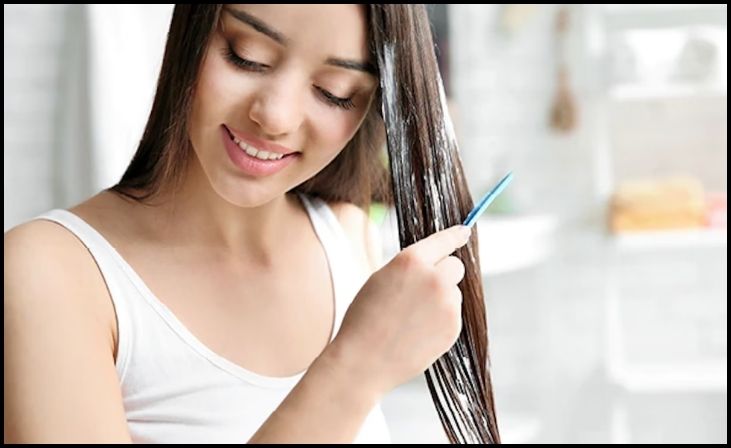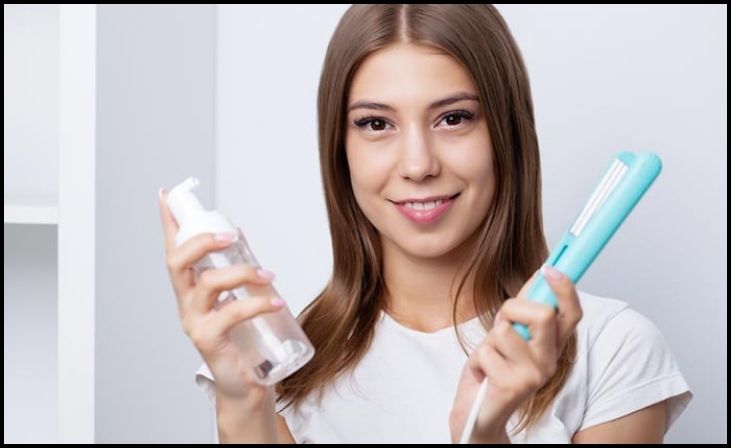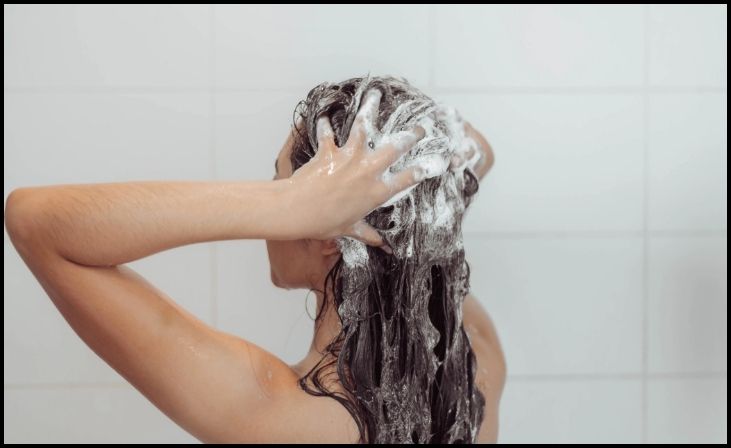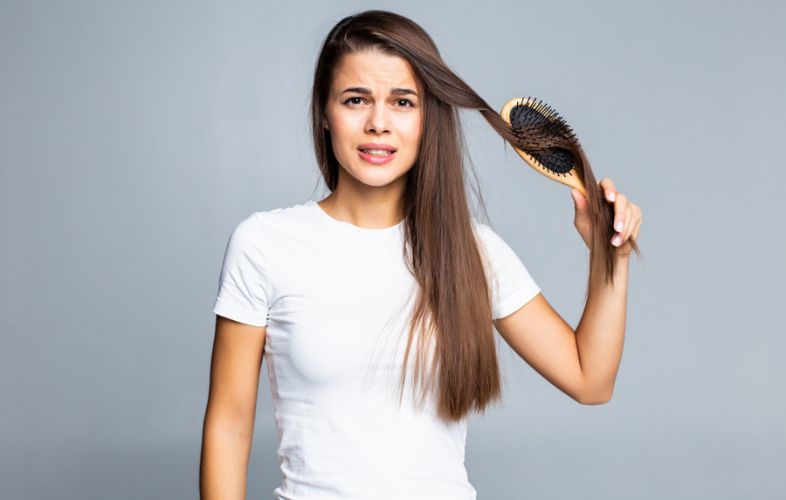Hair Care Routine for Dry and Damaged Hair- Does your hair feel parched, brittle, and in dire need of rescue? Say goodbye to dry, damaged hair woes with our comprehensive guide to the best hair care routine tailored explicitly for revitalizing distressed locks. Dryness and damage can result from various factors—excessive heat styling, environmental stressors, or chemical treatments—but a well-crafted hair care routine can restore your hair’s health and shine.
Our expert-curated routine comprises nourishing treatments, gentle cleansing methods, and hydration techniques aimed at replenishing moisture and repairing damage. We understand the frustration of dealing with unmanageable hair, and that’s why we’re here to equip you with tips and products that breathe life back into your locks. Get ready to transform your hair care regimen and embrace the journey to luscious, revitalized hair that radiates health and vitality!
Hydrating Shampoo and Conditioner
Hydrating shampoo and conditioner are hair care products designed to replenish moisture and nourishment to dry, brittle, or damaged hair. They contain ingredients like natural oils, vitamins, and humectants that lock in moisture, prevent dehydration, and restore hair’s health and shine. Hydrating shampoo gently cleanses the scalp and hair without stripping away natural oils, while the conditioner adds an extra layer of hydration, detangles strands, and smoothens the cuticles for manageability.
These products are beneficial for various hair types, especially for those exposed to heat styling, chemical treatments, or environmental stressors that can cause moisture loss. Regular use of hydrating shampoo and conditioner helps maintain hair’s elasticity, softness, and vibrancy, promoting overall hair health and a revitalized, hydrated appearance.
Weekly Deep Conditioning Treatment

A weekly deep conditioning treatment is an intensive hair care ritual aimed at rejuvenating and strengthening hair. It involves applying a highly concentrated conditioner or mask to clean, damp hair, focusing on the mid-lengths to ends. This treatment typically contains potent hydrating agents, proteins, and nourishing oils that deeply penetrate the hair shaft, repairing damage, restoring moisture, and enhancing elasticity.
By allowing the product to sit for an extended period, often with the aid of heat or a shower cap, the ingredients can deeply nourish and revitalize the hair, addressing issues such as dryness, frizz, and brittleness. Regular use of a weekly deep conditioning treatment helps improve hair texture, manageability, and overall health, leaving hair soft, shiny, and more resilient against everyday stressors and styling.
Also Read: Best Shag Haircuts for Women in Their 40s
Leave-In Conditioner or Hair Mask
Leave-in conditioner and hair masks are specialized treatments used to improve hair health beyond regular washing and conditioning. Leave-in conditioners are lightweight, designed to be applied after showering and left in the hair without rinsing. They provide ongoing moisture, detangling properties, and often contain UV protection and heat defense, making them ideal for daily use to maintain hydration and manageability.
On the other hand, a hair mask is a more intense, occasional treatment. It’s a highly concentrated conditioning product applied to clean, damp hair and left in for a specific duration, usually 10-30 minutes, before rinsing out. Hair masks deeply nourish, repair damage, and can target specific concerns like frizz, dryness, or breakage due to their higher concentration of ingredients.
Both products offer unique benefits, with leave-in conditioners providing daily maintenance and hair masks offering a deeper, periodic restoration for healthier, more manageable hair.
Use a Wide-Tooth Comb
Using a wide-tooth comb is a hair care practice that involves using a comb with spaced-apart teeth, beneficial for detangling wet or dry hair without causing breakage. The wider gaps between the teeth minimize pulling and tension on the hair strands, reducing the risk of damage, especially when the hair is most fragile—when wet. This method prevents hair breakage and minimizes stress on the scalp, making it ideal for various hair types, particularly curly or textured hair prone to tangling.
The wide-tooth comb gently glides through knots, easing out tangles without causing excessive pulling or stretching, promoting smoother, healthier hair. Incorporating a wide-tooth comb into your hair care routine can contribute to minimizing breakage, preserving hair strength, and maintaining overall hair health.
Avoid Heat Styling or Use Heat Protectant

Minimizing heat styling or using a heat protectant are strategies to safeguard hair from damage caused by high temperatures. Heat styling tools like straighteners, curling irons, and blow dryers can strip moisture from hair, leading to dryness, breakage, and dullness. Avoiding excessive heat styling helps maintain hair health. However, when heat styling is necessary, applying a heat protectant before using hot tools creates a barrier between the hair and heat, reducing the impact on the hair shaft.
Heat protectants often contain silicones or polymers that shield the hair from excessive temperatures, preventing moisture loss and minimizing damage. Incorporating these practices into your routine helps preserve hair strength, prevent split ends, and maintain the overall condition and vitality of your hair, especially for those who frequently use heat styling tools.
Regular Trims to Remove Split Ends
Regular trims are a key practice for maintaining healthy hair by removing split ends. Split ends occur when the hair shaft splits into two or more fragments, typically caused by damage from heat, styling, or environmental factors. Regular trimming, typically recommended every 6-8 weeks, removes these damaged ends, preventing splits from traveling up the hair shaft and causing further breakage. By snipping off the frayed ends, the hair appears smoother, healthier, and more manageable.
This practice also promotes better hair growth since healthy ends are less prone to breakage, allowing the hair to grow longer without the hindrance of split ends. Regular trims contribute significantly to the overall appearance and health of your hair, keeping it looking fresh, vibrant, and free from damaging split ends.
Limit Washing to Avoid Stripping Natural Oils

Limiting washing helps preserve the natural oils produced by the scalp, essential for healthy hair. Over-washing can strip these oils, leading to dryness, frizz, and scalp issues. Washing hair too frequently, especially with harsh shampoos, disrupts the scalp’s oil balance, prompting it to produce more oil to compensate, causing greasiness. By spacing out washes, ideally every 2-3 days or as needed, the scalp’s natural oils distribute along the hair shaft, moisturizing and protecting the strands.
Using a gentle, sulfate-free shampoo and focusing on the roots while conditioning the lengths can maintain cleanliness without stripping oils excessively. This practice retains hair’s natural moisture, enhances its shine, and balances oil production, promoting healthier, more vibrant-looking hair. Adjusting the washing frequency according to your hair type and needs can help maintain optimal hair health.
Protective Styles to Minimize Breakage
Protective styles are hairdos that shield the hair from environmental damage, reducing breakage and promoting healthier strands. These styles, like braids, twists, buns, or updos, gather the hair together and minimize manipulation, reducing exposure to harsh elements and friction that can cause breakage. By securing the ends and reducing daily styling, protective styles help retain moisture, prevent tangling, and preserve the hair’s strength.
They’re particularly beneficial for textured or curly hair prone to breakage. However, it’s crucial not to keep these styles in for too long, as prolonged wear can lead to tangling or tension on the hairline. Regularly moisturizing and caring for the scalp while wearing protective styles ensures hair stays healthy and minimizes breakage, allowing for length retention and overall improved hair health.
Also Read: 10 Best Haircuts for Thin Hair
Conclusion
Bid adieu to the distress of dry, damaged hair with our expert-endorsed hair care routine crafted to revive and rejuvenate your locks. Embrace this comprehensive regimen as a transformative journey towards healthier, more resilient hair. By adopting gentle cleansing, nourishing treatments, and protective measures, you’re not just tending to your hair; you’re revitalizing its essence.
Witness your locks transform from parched and brittle to supple and vibrant, radiating newfound vitality and luster. This routine isn’t merely about managing damaged hair; it’s a commitment to restoring its health and strength. Say hello to a new chapter of confident, beautiful hair—healthy, revitalized, and ready to make heads turn!
FAQs
Limit washing to 2-3 times a week using sulfate-free, hydrating shampoos to prevent stripping natural oils and further drying out the hair.
Opt for products containing nourishing ingredients like argan oil, coconut oil, shea butter, and keratin to moisturize and repair damaged strands.
Minimize heat exposure and always use a heat protectant spray before styling. Opt for lower heat settings and limit styling sessions to prevent further damage.

Leave a Reply